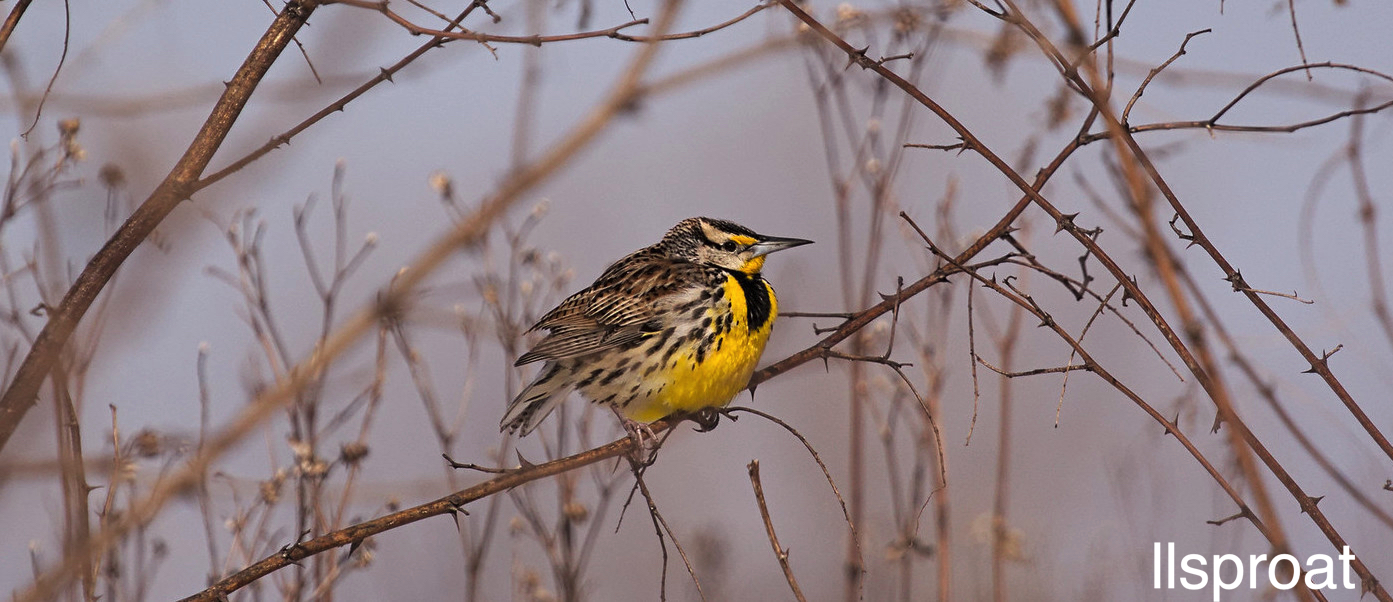Among the most well known of our grassland birds, Eastern Meadowlarks are commonly associated with open landscapes, prairies, and agriculture. These large members of the Blackbird family (Icteridae) are favorites of birders for their flashy yellow breasts and soft, whistled song.
However, these much loved birds are undergoing a large population decline in Vermont and New Hampshire. Through a partnership with New Hampshire Audubon, this bi-state “blitz” aims to document new populations, improve understanding of occupancy patterns, and positively impact on-the-ground conservation of this declining species, while we still have time.
To WATCH A RECORDED presentation, click HERE.
Eastern Meadowlarks, which are listed as Threatened in Ontario and New Hampshire, and proposed for Threatened listing in Vermont, are undergoing an estimated 8.7% annual population decline in Vermont, 8.8% in New Hampshire, and 2.5% across the continent (Sauer et al. 2019). The second Vermont Breeding Bird Atlas (VBBA; Renfrew 2013) similarly showed a significant decrease of 55% from the first atlas. Additionally, the species’ spatial distribution has changed markedly in the past half century; the first VBBA found that 27% of Vermont’s Eastern Meadowlark population resided in the Champlain Valley, compared to over 50% during the second VBBA (Renfrew 2013).
This downtrend in population is primarily due to changes in land use. As Vermont’s forests have reclaimed the land, hayfields have become fewer and fragmented, resulting in wide-spread habitat loss. Additionally, as Vermont’s agricultural industry shifted from sheep to dairy, haying became increasingly intensive and frequent. Today, Vermont’s dairy industry is rapidly changing; it continues to industrialize, farms with over 700 head of cattle increased by 89% between 2011 and 2018 (Claro et al. 2021), and graze less area, ~9% less farmland was grazed between 1997 and 2017. When farms close and their fields are left to go fallow, subdivided, developed, or transitioned to row crops, their habitat value for meadowlarks and other grassland birds inevitably decreases to a point where they become uninhabitable.
This project will obtain valuable data to inform habitat management across both states, and in Vermont especially outside of the species’ core range in the Champlain Valley, by identifying the current distribution, habitat occupancy, and conservation needs of meadowlarks in both states. Following documentation of occupied sites, and an evaluation of which may be most likely for continued occupancy, actions can be taken by conservation organizations and/or state and local agencies to conserve existing habitat and improve or restore surrounding parcels of habitat.
Citations:
Claro, J., S. Danly, B. Warren, E. Kahler, A. Willard, and K. Harris. 2021. Vermont Agriculture and Food System Strategic Plan 2021-2030.
Renfrew, R.B. ed. 2013. The Second Atlas of Breeding Birds of Vermont. University Press of New England, Hanover, NH. 548 pp.
Sauer, J. R., D. K. Niven, J. E. Hines, D. J. Ziolkowski, Jr, K. L. Pardieck, J. E. Fallon, and W. A. Link. 2019. The North American Breeding Bird Survey, Results and Analysis 1966 – 2019. Version 2.07.2017 USGS Patuxent Wildlife Research Center, Laurel, MD.
Cover image by llsproat under CC BY-NC-SA 2.0








